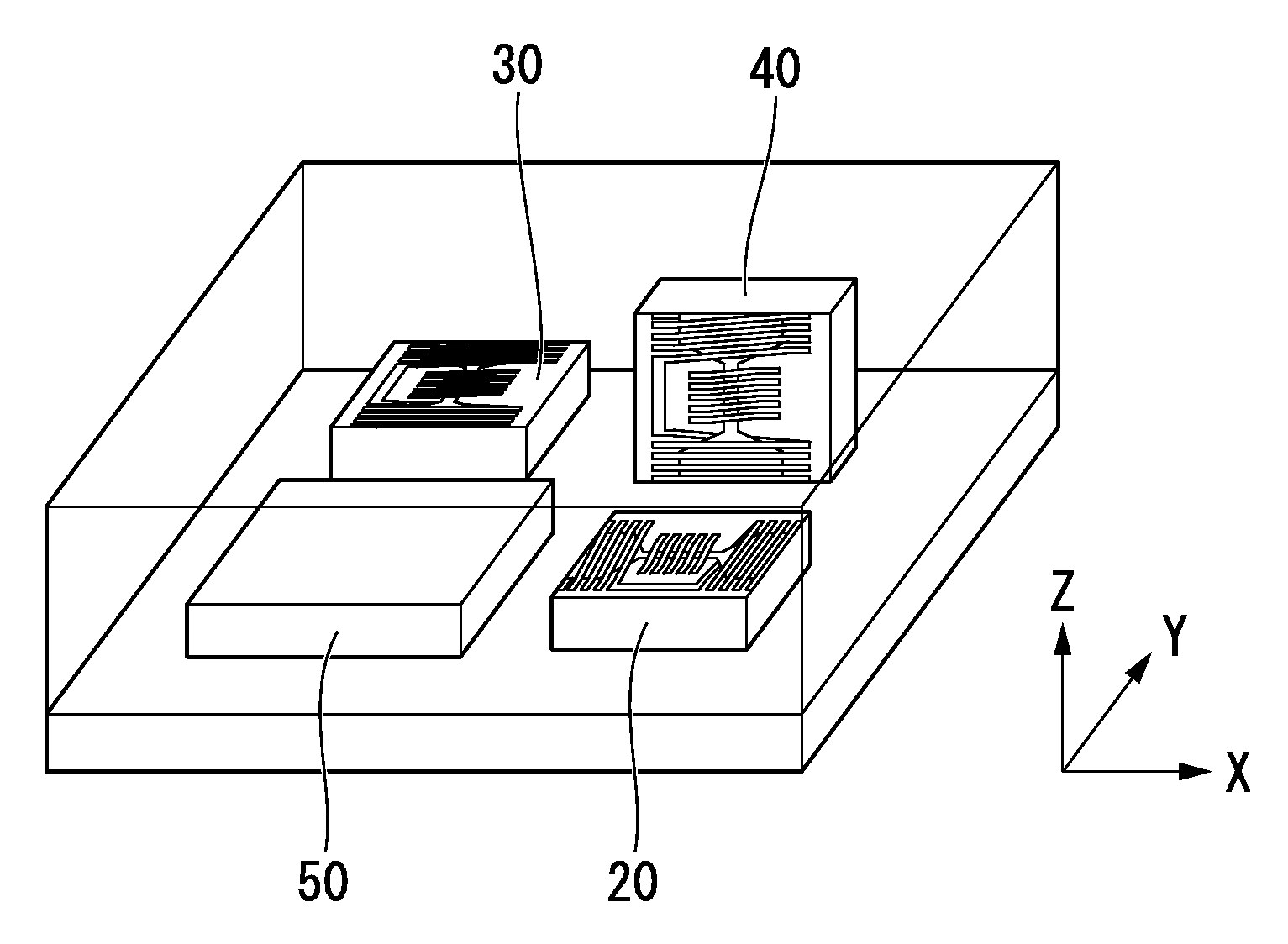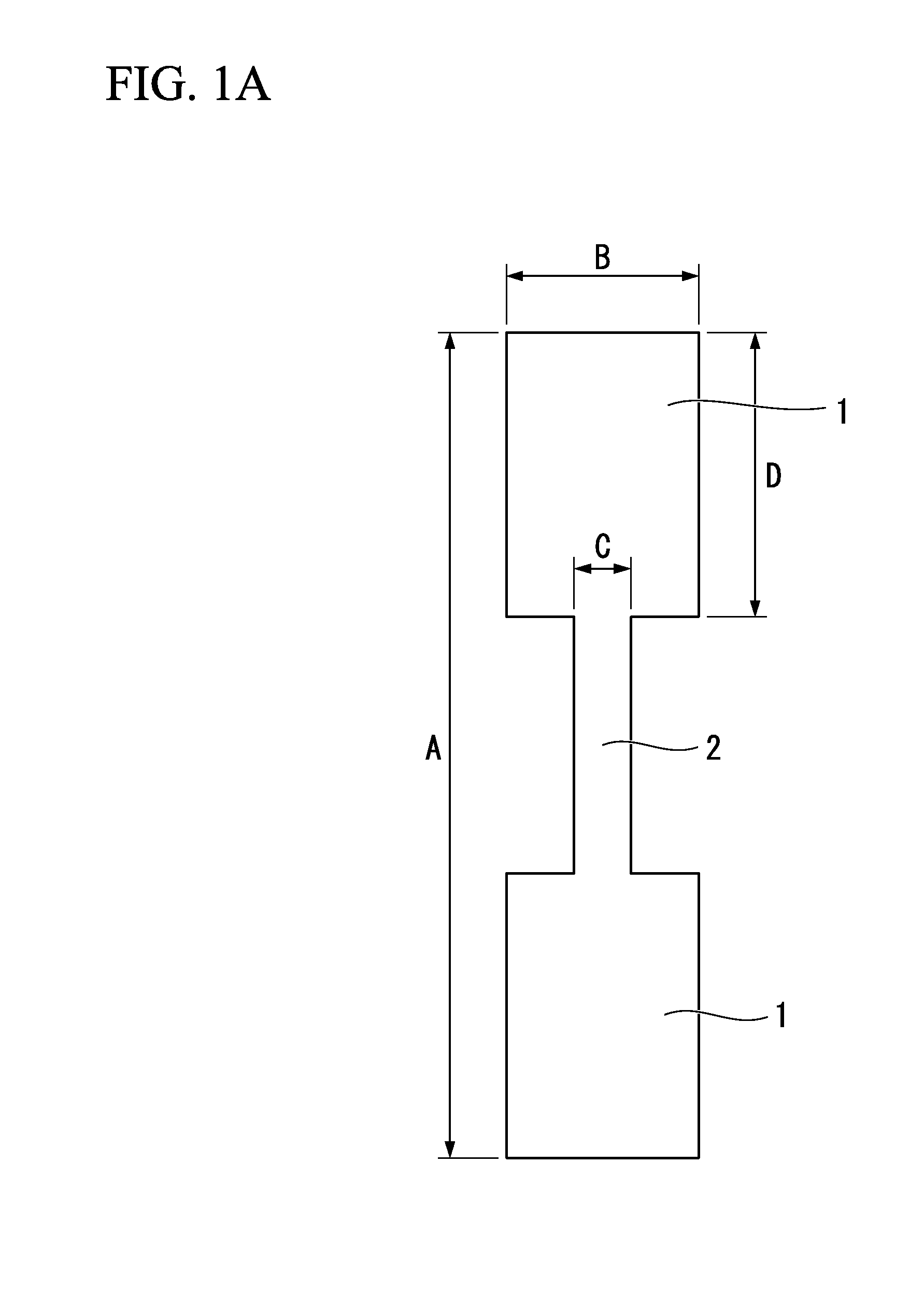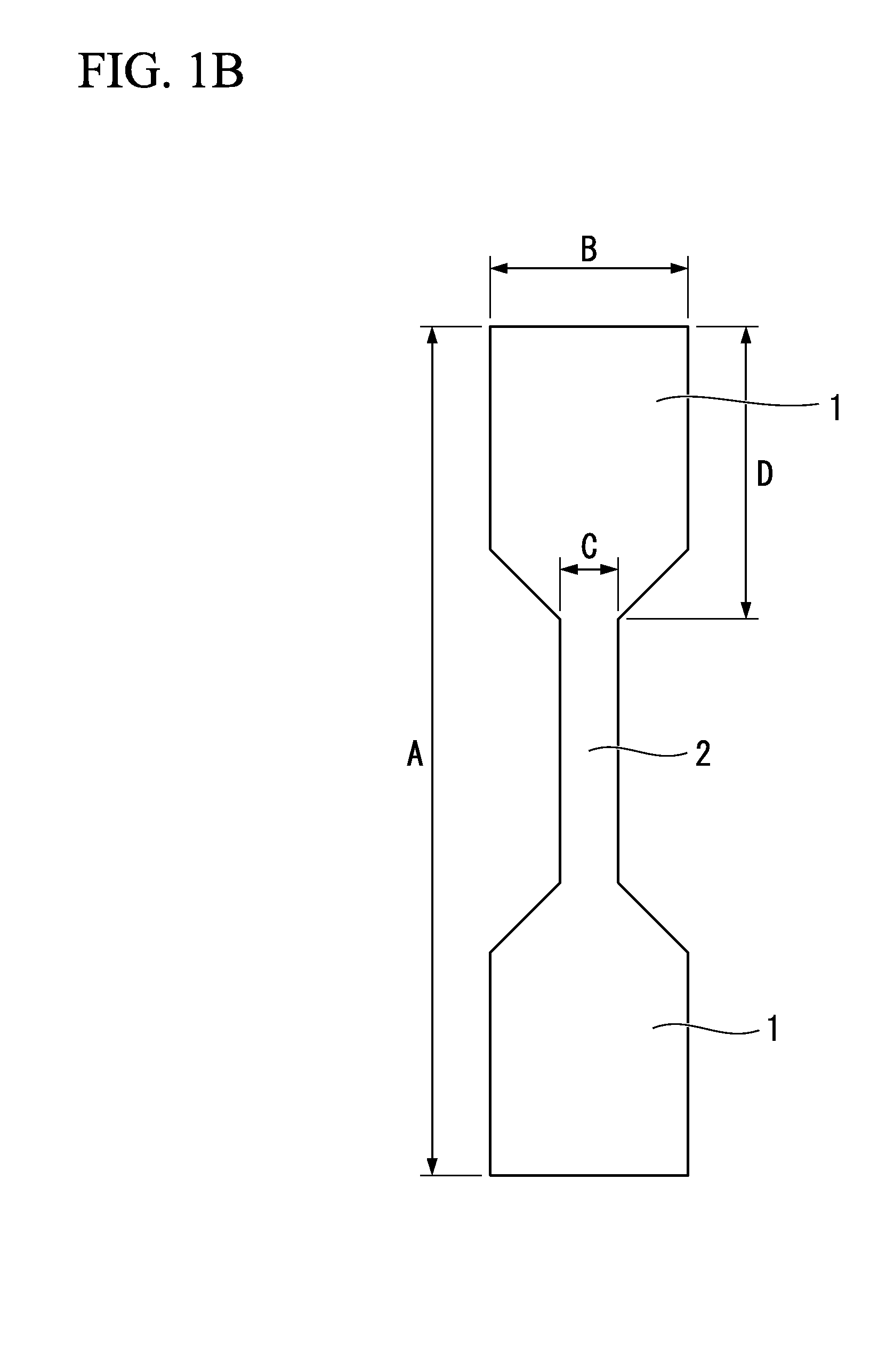Fluxgate sensor and electronic compass making use thereof
a technology of electronic compass and sensor, which is applied in the direction of magnetic measurement, instruments, surveying and navigation, etc., can solve the problems of reducing the sensitivity of these sensors, limiting the azimuth accuracy of electronic compass using these sensors to approximately 10 degrees, and reducing the size of electrode pads, reducing the number of coils wound on the excitation coil, and reducing the size
- Summary
- Abstract
- Description
- Claims
- Application Information
AI Technical Summary
Benefits of technology
Problems solved by technology
Method used
Image
Examples
first preferred embodiment
[0057]Hereinafter, a first preferred embodiment of the present invention will be described in detail with reference made to the drawings.
[0058]FIG. 1A and FIG. 1B are plan views showing examples of the shape of a magnetic core of a fluxgate sensor according to a first preferred embodiment of the present invention. As is shown in FIG. 1A and FIG. 1B, the magnetic core of the fluxgate sensor of the first preferred embodiment of the present invention has end portions 1 and a center portion 2. A width B of the end portions 1 is greater than a width C of the center portion 2. A length A in the longitudinal direction of the magnetic core is not more than 1 mm, and desirably not more than 0.5 mm. The value of a ratio B / D between the width B of the end portions 1 and a length D in the longitudinal direction of the end portions 1 is less than 1. The longitudinal direction of the magnetic core of the fluxgate sensor coincides with the direction of magnetic sensitivity of the fluxgate sensor. ...
examples
[0096]A fluxgate sensor was manufactured in the above described manner for use as an example. The shape of the magnetic core of the fluxgate sensor was as follows: the length A in the longitudinal direction of the magnetic core=480 μm, the width B of the end portions 1=80 μm, the width C of the center portion 2=20 μm, the length D in the longitudinal direction of the end portions 1=140 μm, the number of winds in the excitation coils was 16.5, and the number of winds in the pickup coil was 6.5.
[0097]FIG. 9 is a graph showing the output waveform of a positive / negative pulse-shaped pickup voltage when a triangular wave current having an amplitude of 100 mA, and a frequency of 30 kHz was supplied to the fluxgate sensor of the aforementioned example. FIG. 10 is a graph showing the output from a fluxgate sensor relative to the external magnetic field dependency, namely, the external magnetic field in a time interval t during which the positive / negative pulse-shaped pickup voltage shown in...
second preferred embodiment
[0112]FIG. 12 illustrates how excitation coils and a detection coil are wound in a fluxgate sensor according to a second preferred embodiment of the present invention.
[0113]In the first preferred embodiment, the excitation coils are only wound onto the broad-width end portions 1 at the two ends of the magnetic core. In contrast to this, in the second preferred embodiment, the first solenoid coils 9, which are excitation coils, are wound not only onto the broad-width end portions 1 at the two ends, but also onto the narrow-width center portion 2. Namely, the excitation coils are wound over the entire circumference of the magnetic core, and the second solenoid coil 10, which is a detection coil, is only wound onto the center portion 2 of the magnetic core. In this winding mode as well, the same operating effects as in the above described first preferred embodiment are obtained.
PUM
 Login to View More
Login to View More Abstract
Description
Claims
Application Information
 Login to View More
Login to View More - R&D
- Intellectual Property
- Life Sciences
- Materials
- Tech Scout
- Unparalleled Data Quality
- Higher Quality Content
- 60% Fewer Hallucinations
Browse by: Latest US Patents, China's latest patents, Technical Efficacy Thesaurus, Application Domain, Technology Topic, Popular Technical Reports.
© 2025 PatSnap. All rights reserved.Legal|Privacy policy|Modern Slavery Act Transparency Statement|Sitemap|About US| Contact US: help@patsnap.com



